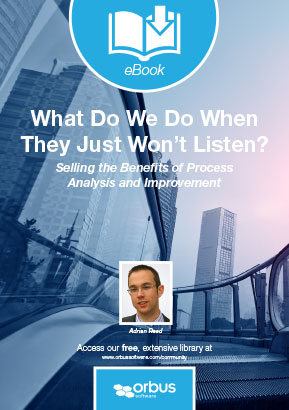Adrian Reed shares his top tips on doing so - how best to effectively communicate the case for analysis, overcome objections and sell the benefits of documented process.
Imagine the scene. You walk into the office on a typical and unexciting Monday morning. As you take your first sip of coffee and start to plan out the rest of your day, the phone rings unexpectedly. You answer it and you are greeted by the animated voice of a senior executive who you know well. After exchanging pleasantries about the weekend, the executive describes a perceived problem in their area which has been building up over time. Perhaps they have a warehouse and dispatch team that are struggling with peaks and troughs in demand (and are finding it hard to manage staffing levels). Before getting into too much detail, you hear those oh-so-fateful words:
"I’ve been reading about a new software package that looks really interesting. It’s all over the industry press, and it helps to forecast demand and track progress in warehouses. It’d also help us to streamline our process by automatically flagging bottlenecks. Can we get the vendor in and get them to provide a quote? I reckon this will really help our situation!"
You can feel your heart rate increase—as you sip the last drop of coffee you wonder whether it’s the caffeine. Or perhaps it’s the sense of deja-vu… you’ve been in this situation before. As a practitioner of holistic change you want to delve into the detail before prescribing a solution. You want to examine different angles of the problem situation—the process, the hand-overs, the measures and incentives, the existing IT… and you want to do this long before considering what a potential solution might be. You’ll want to understand the end-to-end business process—warts and all—before proceeding. Of course, the software that the executive is suggesting might be a very appropriate solution—but there might be others that haven’t been considered yet. In fact, there may be alternative solutions that don’t involve IT changes at all.
Adrian Reed shares his top tips on how best to effectively communicate the case for analysis, overcome objections and sell the benefits of documented process. Login to continue reading or register to download the ebook.
